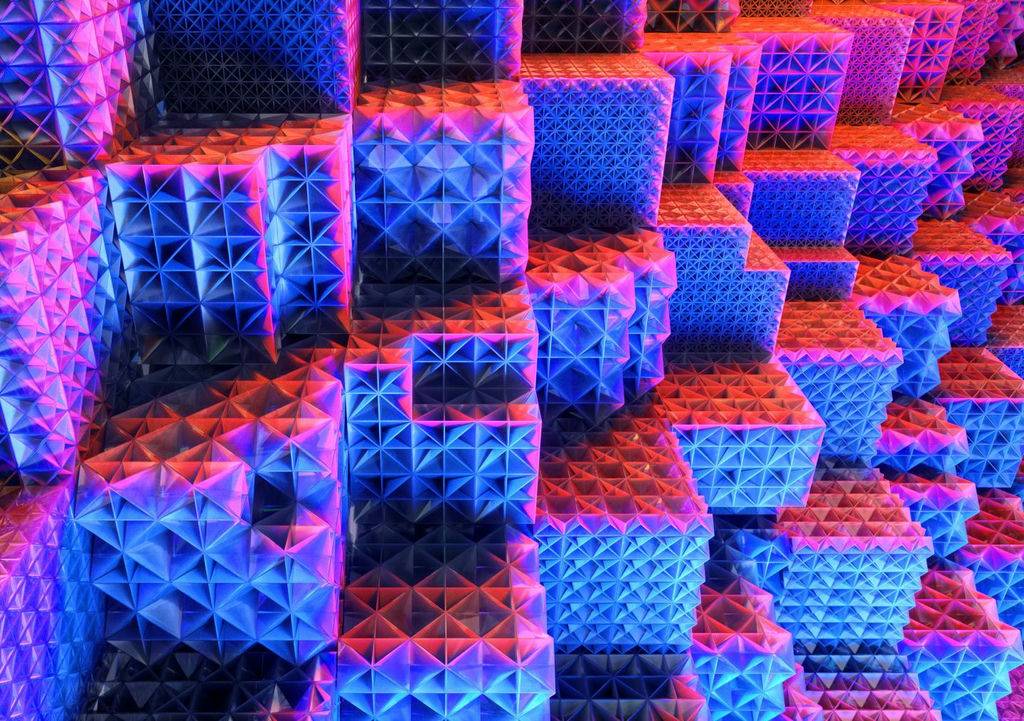[ihc-hide-content ihc_mb_type=”show” ihc_mb_who=”reg” ihc_mb_template=”3″ ]
[vc_row][vc_column][vc_column_text]Credits – www.3dprintingindustry.com
In particular, the research establishes a new class of metamaterial termed “plate-lattices” which suggest a stiffness “up to three times higher than that of the stiffest truss‐lattices of equal mass.” According to Professor Dirk Mohr, specialist in Computational Modeling of Materials in Manufacturing at ETH Zurich, these new lattices “will be the design of choice” when the 3D printing industry moves into mass manufacturing.[/vc_column_text][vc_single_image image=”4879″ img_size=”full” add_caption=”yes” alignment=”center”][vc_column_text]A truss or a lattice? What’s the difference?
Often pared together, “truss” and “lattice” shapes are frequently synonymous with one another. Citing some of the world’s most iconic landmarks, Professor Mohr explains, “The truss principle is very old; it has long been used for half-timbered houses, steel bridges and steel towers, such as the Eiffel Tower. We can see through truss lattices, so they are often perceived as ideal lightweight structures.”
Where trusses can be considered as interconnecting beams, or struts, plates are more like clusters of walls. Through computational modeling, Professor Mohr’s team are capable of creating rival lattice structures using these plates. The difference can be noted in the figure below.[/vc_column_text][vc_single_image image=”4877″ img_size=”full” add_caption=”yes” alignment=”center”][vc_column_text]Mass production ready
Due to their complexity, 3D printing is the only way of fabricating these plate-lattices. As a proof of concept, computational models of these plate-lattices were fabricated by the ETH Zurich team on a microscopic level.
Using a Nanoscribe Photonic Professional GT system, cubes measuring 200 x 200 x 200 μm were 3D printed. These were then compression tested, leading to a yield strength “within a few percent of the theoretical limits for isotropic porous solids.” Though only produced at this scale, the scientists believe that the plate-lattices could be theoretically manufactured at any size. It’s just a case of the cost.
“If these kinds of lattices were to be additively manufactured from stainless steel today, they would cost as much per gram as silver,” says Professor Mohr. “But the breakthrough will come when additive manufacturing technologies are ready for mass production. Lightweight construction, the current cost of which limits its practical use to aircraft manufacturing and space applications, could then also be used for a wide array of applications in which weight plays a role.”
The full results of this study, “3D Plate‐Lattices: An Emerging Class of Low‐Density Metamaterial Exhibiting Optimal Isotropic Stiffness,” are published online in Advanced Materials journal. It is co-authored by Thomas Tancogne‐Dejean, Marianna Diamantopoulou, Maysam B. Gorji, Colin Bonatti and Dirk Mohr.[/vc_column_text][/vc_column][/vc_row]
[/ihc-hide-content]
The AM Chronicle Editorial Team is a collective of passionate individuals committed to delivering insightful, accurate and engaging stories to additive manufacturing audiences worldwide.



